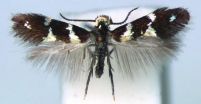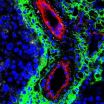(Press-News.org) Highlights
Frequent or extended dialysis treatments during the day or at night may improve patients' survival compared with conventional dialysis.
Nighttime or daily dialysis may also improve patients' health and reduce their need for medications.
Approximately 2 million patients in the world receive some sort of dialysis treatment.
Washington, DC -- Frequent and longer dialysis treatments may provide more benefits for patients than conventional dialysis treatments, according to several studies appearing in upcoming issues of the Journal of the American Society Nephrology (JASN). The findings suggest that daily or nightly dialysis sessions at home or in the clinic are viable—and perhaps superior—alternatives for some patients with kidney failure.
Most kidney failure patients who undergo dialysis receive treatments at outpatient facilities three times per week, for three to four hours per visit. Researchers suspect that more frequent and longer treatments might be more effective, but these would be inconvenient for most patients and would take up too much of their time. Therefore, nighttime dialysis while patients sleep (at home or in a clinic) or daily treatments at home might be good options.
Several groups of researchers set out to test these alternatives. Their findings are summarized below.
Eric Weinhandl (Minneapolis Medical Research Foundation) and his co-investigators compared survival of 1,873 daily home dialysis patients using the NxStage System One—a portable hemodialysis machine for use in the home—between 2005 and 2008 with 9,365 thrice-weekly in-center hemodialysis patients. Over an average period of 1.7 to 1.8 years, daily home dialysis patients were 13% less likely to die than thrice-weekly clinic patients, and the survival benefit of daily home dialysis appeared to apply to all types of patients (different sexes, races, weights, etc.). "Whether these results apply to all hemodialysis patients needs further study because patients in our analysis were generally younger and less sick," said Weinhandl.
Gihad Nesrallah, MD, Rita Suri, MD (University of Western Ontario, in London, Canada), and their team compared 338 patients who received intensive home hemodialysis (during the day or night) for an average of 4.8 sessions per week and an average treatment time of 7.4 hours per session with 1,388 patients who received conventional hemodialysis. After following patients for an average of 1.8 years, the researchers found that patients receiving intensive dialysis were 45% less likely to die than patients receiving conventional dialysis. "Whether this improvement in survival is due to increased intensity of dialysis itself or due to the fact that the intensive dialysis patients performed their own dialysis treatments at home is not yet clear," said Dr. Suri.
Eduardo Lacson, Jr., MD (Fresenius Medical Care North America) and his colleagues studied the health of 746 patients who received hemodialysis treatments at a clinic for three nights per week and for an average of eight hours per night, compared with 2,062 similar patients who received conventional hemodialysis treatments. During a two-year follow-up period, patients who received nighttime dialysis had a 25% reduced risk of dying compared with conventional dialysis. Nighttime dialysis patients also experienced improvements in certain measures such as lower weight, blood pressure, and blood phosphorous levels. "This comparison primarily evaluated the impact of the length of treatment time on hemodialysis because patients were all dialyzed in the center and at the same frequency of three times per week," said Dr. Lacson. "Longer treatment time allows for removal of fluid and waste products at a slower pace, but with the added benefit of potentially removing larger quantities from the body."
Finally, John Daugirdas, MD (University of Illinois at Chicago) and his team analyzed data from two studies, the Frequent Hemodialysis Network Daily and Nocturnal Trials, which compared frequent (six times per week) treatments received during the day or at night, with conventional dialysis. Daugirdas and his colleagues looked to see if more frequent dialysis treatments could help lower patients' blood phosphorus levels. (Traditionally, dialysis patients often have high levels, which puts them at risk of developing various complications such as heart disease.) Compared with conventional dialysis treatments, daily or nightly dialysis treatments for 12 months lowered patients' phosphorus levels and reduced their need for phosphorus-lowering medications.
The studies' findings indicate that additional research is warranted to determine if extended or more frequent dialysis treatments provide benefits for all dialysis patients and to determine the optimal treatment frequency and session length.
###
The following articles will appear online at http://jasn.asnjournals.org/ on February 23, 2012:Weinhandl: "Survival in Daily Home Hemodialysis and Matched Thrice-Weekly In-Center Hemodialysis Patients." doi: 10.1681/ASN.2011080761
Nesrallah: "Intensive Hemodialysis Associates with Improved Survival Compared with
Conventional Hemodialysis." doi: 10.1681/ASN.2011070676
Lacson: "Survival with Three-Times Weekly In-Center Nocturnal Versus Conventional Hemodialysis." doi: 10.1681/ASN.2011070674
Daugirdas: "Effects of Frequent Hemodialysis on Measures of CKD Mineral and Bone Disorder." doi: 10.1681/ASN.2011070688
For a complete list of disclosures and additional information, please contact Adrienne Lea at alea@asn-online.org or 202-503-6560.
The content of these articles does not reflect the views or opinions of The American Society of Nephrology (ASN). Responsibility for the information and views expressed therein lies entirely with the author(s). ASN does not offer medical advice. All content in ASN publications is for informational purposes only, and is not intended to cover all possible uses, directions, precautions, drug interactions, or adverse effects. This content should not be used during a medical emergency or for the diagnosis or treatment of any medical condition. Please consult your doctor or other qualified health care provider if you have any questions about a medical condition, or before taking any drug, changing your diet or commencing or discontinuing any course of treatment. Do not ignore or delay obtaining professional medical advice because of information accessed through ASN. Call 911 or your doctor for all medical emergencies.
Founded in 1966, and with more than 13,500 members, the American Society of Nephrology (ASN) leads the fight against kidney disease by educating health professionals, sharing new knowledge, advancing research, and advocating the highest quality care for patients.
More is better: Frequent or extended dialysis treatments benefit kidney failure patients
Nighttime or daily dialysis may improve patients' health and survival
2012-02-24
ELSE PRESS RELEASES FROM THIS DATE:
Chicago's House of Blues Goes Green
2012-02-24
Last Thursday, February 16, 2012, The House of Blues in Chicago, IL featured hometown hip hop artist Nick Carter Green. The nearly sold out crowd rocked to the rhythms of jazz, funk, and rap as Green was backed by legendary percussionist Kahil El'Zabar. El'Zabar, also a Chicago native who has worked with Stevie Wonder, Nina Simone, Dizzy Gillespie and Paul Simon, called the show "a conversion of generations to celebrate the power of soul through hip hop."
Opening with his remix to Drake's "Headlines", which went viral on World Star Hip Hop back in ...
Genetic variants affect arsenic metabolism and toxicity in Bangladesh
2012-02-24
A large-scale genomic study conducted in Bangladesh has discovered genetic variants that control arsenic metabolism and elevate the risk of skin lesions in people chronically exposed to arsenic. In PLoS Genetics, researchers from the University of Chicago, Columbia University, the International Center for Diarrheal Disease Research in Bangladesh, and the University of North Carolina report that genetic variants found near the enzyme for metabolizing the chemical into a less toxic form are associated with an individual's risk of developing arsenic-related disease.
Since ...
For fish, fear smells like sugar
2012-02-24
When one fish gets injured, the rest of the school takes off in fear, tipped off by a mysterious substance known as "Schreckstoff" (meaning "scary stuff" in German). Now, researchers reporting online on February 23 in the Cell Press journal Current Biology have figured out what that scary stuff is really made of.
Within that chemical brew is a special type of sugar found in abundance in fish skin. When a fish is wounded, fragments of the sugar known as chondroitin sulfate alarm other fish nearby.
"Our results provide a solution to a 70-year-old puzzle: the nature of ...
Disarming the botulinum neurotoxin
2012-02-24
LA JOLLA, Calif., February 23, 2012 – Researchers at Sanford-Burnham Medical Research Institute (Sanford-Burnham) and the Medical School of Hannover in Germany recently discovered how the botulinum neurotoxin, a potential bioterrorism agent, survives the hostile environment in the stomach on its journey through the human body. Their study, published February 24 in Science, reveals the first 3D structure of a neurotoxin together with its bodyguard, a protein made simultaneously in the same bacterium. The bodyguard keeps the toxin safe through the gut, then lets go as the ...
Plastic Surgeon Comments on Tummy Tuck Advancements
2012-02-24
It's 2012, which for the plastic surgery industry means more advancements than ever before.
While groundbreaking technology and the emergence of new surgical techniques are exciting, potential patients should be sure that these innovations are time-tested before seriously considering them. A tummy tuck surgeon in Birmingham, Dr. Michael Beckenstein, stresses that patients should choose a surgeon based on the doctor's qualifications and experience with a particular procedure, and not just because he or she offers the "latest and greatest" treatments.
"As ...
Study: Evolution of earliest horses driven by climate change
2012-02-24
When Sifrhippus, the earliest known horse, first appeared in the forests of North America more than 50 million years ago, it would not have been mistaken for a Clydesdale. It weighed in at around 12 pounds -- and it was destined to get much smaller over the ensuing millennia.
Sifrhippus lived during the Paleocene-Eocene Thermal Maximum, a 175,000-year interval of time some 56 million years ago in which average global temperatures rose by about 10 degrees Fahrenheit, caused by the release of vast amounts of carbon into the atmosphere and oceans.
About a third of mammal ...
Genetic risk for elevated arsenic toxicity discovered
2012-02-24
One of the first large-scale genomic studies conducted in a developing country has discovered genetic variants that elevate the risk for skin lesions in people chronically exposed to arsenic. Genetic changes found near the enzyme for metabolizing the chemical into a less toxic form can significantly increase an individual's risk for developing arsenic-related disease.
The discovery could point the way to new screening and intervention options for people who are exposed to groundwater with high levels of arsenic, said scientists at the University of Chicago Medicine, Columbia ...
Italian vineyards invaded from North America by new species of leafminer
2012-02-24
Since in 2006 an unknown leafmining moth was found in North Italian vineyards by Mario Baldessari and colleagues, often in great numbers, scientists have tried to put a name to this apparently new invader. Italian scientists from the Fondazione Edmund Mach di San Michele all'Adige and the Università di Padova turned for help to taxonomists in the Netherlands and United States. The new species was described in the open access journal ZooKeys.
The family to which the moth belongs, the shield bearing leafminers (Heliozelidae) appeared to be poorly studied in North America, ...
Global Gaming Events Launches $5,000 Slots Freeroll with Casino Titan Open to All Depositing Players Including USA
2012-02-24
Global Gaming Events launches another whopping $5,000 casino freeroll tournament with Casino Titan to be held in March 2012.
This event runs on Saturday, March 3rd, 2012 3pm ET to Sunday, March 4th, 2012 3pm ET. All players who have made at least one deposit or reload of a minimum of $50 during the month of February 2012 are eligible to play. Players must also pre-register for the event with Global Gaming Events to be eligible.
The tournament formats will be a 10 minute 5,000 Starting Chip Slot Tournaments and will have a maximum of 1000 players. Each player will ...
Breaking down cancer's defense for future vaccines
2012-02-24
Researchers at the EPFL have identified an important mechanism that could lead to the design of more effective cancer vaccines. Their discovery of a new-found role of the lymphatic system in tumour growth shows how tumours evade detection by using a patient's own immune system.
Tumour cells present antigens or protein markers on their surfaces which make them identifiable to the host immune system. In the last decade, cancer vaccines have been designed that work by exposing the patient's immune cells to tumour-associated antigens and so priming them to kill cells that ...
LAST 30 PRESS RELEASES:
NTIDE: Disability employment holds steady after data hiatus
Social lives of viruses affect antiviral resistance
Dose of psilocybin, dash of rabies point to treatment for depression
Helping health care providers navigate social, political, and legal barriers to patient care
Barrow Neurological Institute, University of Calgary study urges “major change” to migraine treatment in Emergency Departments
Using smartphones to improve disaster search and rescue
Robust new photocatalyst paves the way for cleaner hydrogen peroxide production and greener chemical manufacturing
Ultrafast material captures toxic PFAS at record speed and capacity
Plant phenolic acids supercharge old antibiotics against multidrug resistant E. coli
UNC-Chapel Hill study shows AI can dramatically speed up digitizing natural history collections
OYE Therapeutics closes $5M convertible note round, advancing toward clinical development
Membrane ‘neighborhood’ helps transporter protein regulate cell signaling
Naval aviator turned NPS doctoral student earns national recognition for applied quantum research
Astronomers watch stars explode in real time through new images
Carbon-negative building material developed at Worcester Polytechnic Institute published in matter
Free radicals caught in the act with slow spectroscopy
New research highlights Syntax Bio’s platform for simple yet powerful programming of human stem cells
Researchers from the HSE University investigated reading in adolescents
Penn Nursing study: Virtual nursing programs in hospitals fall short of expectations
Although public overwhelmingly supports hepatitis B vaccine for a newborn, partisan differences exist
DFW backs UTA research to bolster flood resilience
AI brain scan model identifies stroke, brain tumors and aneurysms – helping radiologists triage and speed up diagnoses
U.S. News & World Report gives Hebrew Rehabilitation Center highest rating
Optica and DPG name Antoine Browaeys 2026 Herbert Walther Award recipient
The presence of a gun in the home increases the risk of suicide by three to five times
PFAS exposure and endocrine disruption among women
Vaccines and the 2024 US presidential election
New approach narrows uncertainty in future warming and remaining carbon budget for 2 °C
When pregnancy emergencies collide with state abortion bans
American College of Cardiology supports front of package nutrition labeling
[Press-News.org] More is better: Frequent or extended dialysis treatments benefit kidney failure patientsNighttime or daily dialysis may improve patients' health and survival






